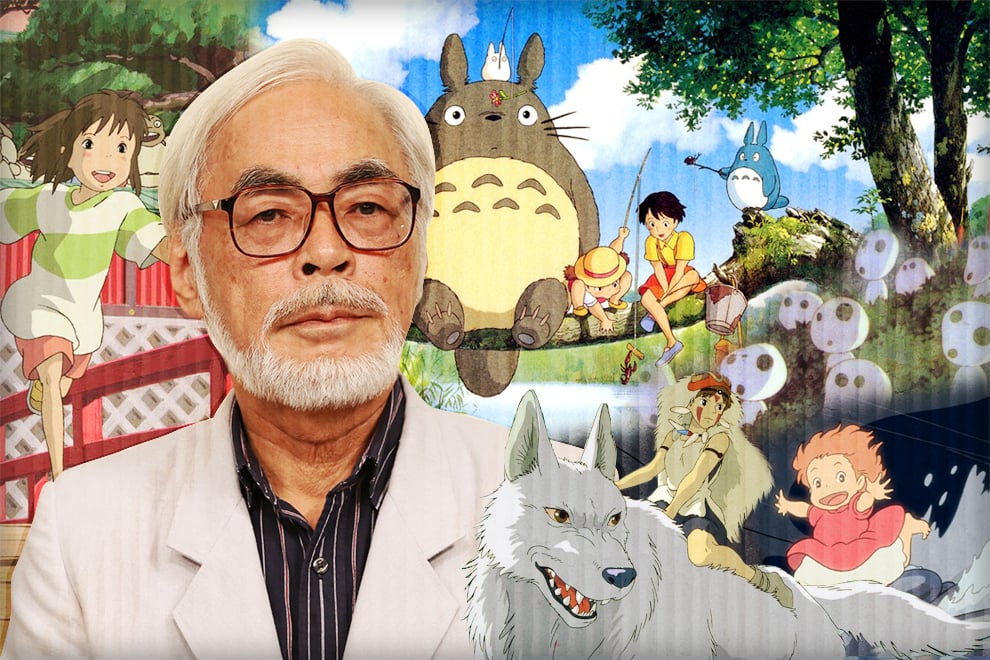Berkley Devotes an Entire Course to the Work of Hayao Miyazaki
One of the most critical filmmakers of our time, Hayao Miyazaki is the subject of a university course dedicated exclusively to the analysis of his films.
Anyone fond of animation and, more generally, of film that moves us (film which broadens our aesthetics and our understanding of the limits of reality), will agree on the importance of Hayao Miyazaki in the recent history of artistic expression. During a career that now spans more than 50 years, the Japanese director went beyond the borders of culture and was pushed by the force of his own creativity and the unique vision of the world expressed in his feature films. While certain aspects of Japanese tradition appear to be understandable only from within their own context, the films of Miyazaki found the common ground from which almost any viewer can take something, and feel that something was understood in a communion of subjectivity.
This doesn’t happen often. In the whole history of the arts, very few talents have achieved this level of widespread acceptance. And it’s not easy to pin-point reasons that explain Miyazaki’s genius, though perhaps it’s possible to venture an enumeration of some of the elements of that genius. For creativity alone, the work is impressive. But Miyazaki also displays a particularly intense dedication to his work, a peculiar mix of love and discipline. He’s also incorporated multiple cultural currents and even political positions to develop his own narrative style. Perhaps some other elements come together into Miyazaki’s unpredictable formula for artistic genius.

To study, understand and learn from that genius, recently the University of California at Berkeley opened an entire course devoted just to the study of Hayao Miyazaki’s work. The class emerged from a student proposal and, though the two head students aren’t enrolled in art, animation or anything of the like, their extensive knowledge of the Japanese director’s work ensures that Evan Ho, a molecular biology student, and Miguel Morales, from applied mathematics, are well equipped for the task. Both are 20 years old.
In addition to a detailed examination of the animation techniques and the historical and cultural development of each of the films of Miyazaki, Ho and Morales explore parallel themes like feminism, multiculturalism, environmentalism, etc. This is largely because, as Ho says, “[Miyazaki’s] films take us out of our comfort zone, which is oftentimes the best place to learn more about the world, and ourselves.”
Perhaps beyond the wonder that these Japanese films can provoke, it’s indisputable that to be considered a true artist argument we need to call into question, just for a moment, our place in the world, and to turn around and discover that there are other ways of understanding, and living, reality.
Related Articles
When ancient rituals became religion
The emergence of religions irreversibly changed the history of humanity. It’s therefore essential to ask when and how did ancient peoples’ rituals become organized systems of thought, each with their
Seven ancient maps of the Americas
A map is not the territory. —Alfred Korzybski Maps are never merely maps. They’re human projections, metaphors in which we find both the geographical and the imaginary. The cases of ghost islands
An artist crochets a perfect skeleton and internal organs
Shanell Papp is a skilled textile and crochet artist. She spent four long months crocheting a life-size skeleton in wool. She then filled it in with the organs of the human body in an act as patient
A musical tribute to maps
A sequence of sounds, rhythms, melodies and silences: music is a most primitive art, the most essential, and the most powerful of all languages. Its capacity is not limited to the (hardly trivial)
The enchantment of 17th-century optics
The sense of sight is perhaps one the imagination’s most prolific masters. That is why humankind has been fascinated and bewitched by optics and their possibilities for centuries. Like the heart, the
Would you found your own micro-nation? These eccentric examples show how easy it can be
Founding a country is, in some ways, a simple task. It is enough to manifest its existence and the motives for creating a new political entity. At least that is what has been demonstrated by the
Wondrous crossings: the galaxy caves of New Zealand
Often, the most extraordinary phenomena are “jealous of themselves” ––and they happen where the human eye cannot enjoy them. However, they can be discovered, and when we do find them we experience a
Think you have strange reading habits? Wait until you've seen how Mcluhan reads
We often forget or neglect to think about the infinite circumstances that are condensed in the acts that we consider habitual. Using a fork to eat, for example, or walking down the street and being
The sky is calling us, a love letter to the cosmos (video)
We once dreamt of open sails and Open seas We once dreamt of new frontiers and New lands Are we still a brave people? We must not forget that the very stars we see nowadays are the same stars and
The sister you always wanted (but made into a crystal chandelier)
Lucas Maassen always wanted to have a sister. And after 36 years he finally procured one, except, as strange as it may sound, in the shape of a chandelier. Maassen, a Dutch designer, asked the










